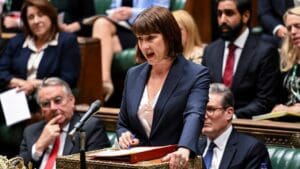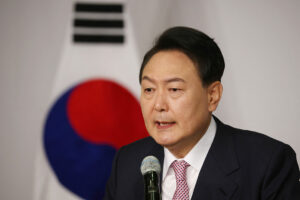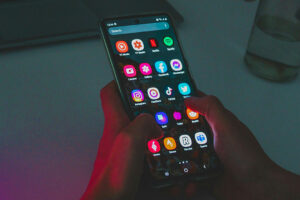First Republic, Signature Bank, and Silicon Valley Bank have all failed, and that’s not the only thing they have in common. Western Alliance Bank’s Ken Vecchione was jealous of these three large regional banks. The chief executive admitted to the New York Times, “We were, I have to admit, a bit envious of them.”
Obviously Vecchione was and likely still is oblivious to problems at his bank and others. He doesn’t understand the fragility of fractional reserve banking. “We certainly didn’t see this coming,” Mr. Vecchione told the Times. Murray Rothbard saw it coming decades ago, writing, “Banks are ‘inherently bankrupt’ because they issue far more warehouse receipts to cash (nowadays in the form of ‘deposits’ redeemable in cash on demand) than they have cash available. Hence, they are always vulnerable to bank runs.”
Western Alliance’s chief financial officer Dale Gibbons and Mr. Vecchione were described as “gape-mouthed” by the Times as long-standing clients decided to withdraw deposits and ask questions later. “These runs are not like any other business failures, because they simply consist of depositors claiming their own rightful property, which the banks do not have,” wrote Rothbard.
“The entire system of fractional-reserve banking, therefore, is built on deceit, a deceit connived by the legal system,” Rothbard explained. Perhaps that’s why there is a banking crisis every ten to twenty years. The system must be propped up by an increasing number of schemes that can be described as government force.
There is no mention of the Federal Home Loan Bank (FHLB) in Rothbard’s book The Mystery of Banking. Created in the Great Depression, the FHLB was created to grease the wheels for financial institutions to make home loans. Now, the $1.5 trillion government behemoth is a go-to source for illiquid banks to obtain funding.
According to Bloomberg, Silicon Valley Bank held $15 billion from an FHLB at the end of 2022; Signature Bank had $11 billion; and by this April, First Republic Bank ended up with more than $28 billion from FHLB. All three banks collapsed.
FHLB didn’t take a loss with these failures because as Bloomberg writer Heather Perlberg explains,
[The FHLBs] have a so-called super lien on the money they lend, putting them at the front of the line to get repaid if a bank collapses. The FHLBs note that any secured lender would take priority in the event of a bank failure. . . .
“You can look at who they are lending to and see it’s not because they’re doing a good job screening for bank quality,” said Kathryn Judge, a Columbia Law School professor who focuses on financial regulation. “It’s a byproduct of the fact there’s a mechanism in place to protect their interests.”
Bloomberg found two former long-time FHLB employees who said they never saw a loan turned down, no matter how poor the financial health of an institution. According to them it’s all about the collateral—US Treasuries, home loans, mortgage-backed securities, and other real estate assets. My experience is they would not lend against land loans or loans involving petroleum use, but little due diligence was done.
FHLBs can sell bonds exempt from state and local income taxes. As was the case with Fannie Mae and Freddie Mac, FHLB bond buyers believe in the debt because of the widespread assumption that if an FHLB ever runs into trouble, the government would jump in with taxpayer money to prevent default. Standard and Poor’s and Moody’s have said their credit ratings for the FHLB system would be several notches lower if not for the government’s presumed backing.
According to Bloomberg, the CEO of the Council of Federal Home Loan Banks Ryan Donovan said, “The implied guarantee is also not something that’s conveyed by the government. It’s something the market perceives that we’re a safe place, that our debt that we issue is solid.”
And it’s not just small and regional banks borrowing from the FHLB. Wells Fargo, JPMorgan Chase Bank, and Citigroup collectively tapped at least $62 billion from FHLBs during last year’s relatively sedate markets.
Bloomberg’s Perlberg explains,
The FHLBs don’t track how banks use their financing. The lifelines can help troubled banks avoid fire sales of assets. But if a firm’s balance sheet is in bad shape, collateralized lending may do little more than postpone the bank’s inevitable demise, potentially letting losses worsen. The Federal Deposit Insurance Corp. is left to clean up the mess.
“That delay makes a difference,” said Judge, the law professor. “Fresh liquidity allows them to limp on longer rather than evaluate their own viability.”
Yes, that’s the idea.
The system’s total loans to members surged 28 percent to $1.04 trillion in the first quarter, beating a record set in the third quarter of 2008.
In March the Federal Reserve created another facility to backstop the nation’s banks called the Bank Term Funding Program (BTFP). BTFP provides loans with maturities of up to a year to banks, savings associations, credit unions, and other eligible depository institutions. It does not apply Walter Bagehot’s putative principles of lending in liquidity crises—to lend freely to solvent banks with good collateral but at penalty rates. The collateral is impaired, the banks insolvent, and the rates are low.
Banks can borrow at 100 percent of the par value of the US Treasuries and mortgage-backed securities among other securities. “This will allow banks to fund potential deposit outflows without crystalizing losses on depreciated securities,” Goldman Sachs wrote the Sunday after the Fed announced the program.
Banks can borrow funds for up to a year and have until March 11, 2024, to avail themselves of the program. The loan interest rates are fixed at a one-year overnight index swap rate plus ten basis points.
“Because the pledged collateral is going to be valued at par, this new facility will ensure that other banks with similarly impaired hold-to-maturity portfolios will be able to easily leverage them to access liquidity, rather than have to realize significant losses and flood the markets with paper,” according to Jefferies economists in a Reuters article.
Remember, the BTFP was just created in March. On June 14, aggregate BTFP borrowings reached just under $102 billion.
Of course, we can’t forget about the Fed. But, while “the members certainly could go to the Fed, the challenge is there is a reputation risk associated with that. In talking with member institutions, they feel that the stigma is real.”
All that keeps bank depositors from pulling their money out is reputation, and more than a little help from bankers’ growing list of friends, old and new.























